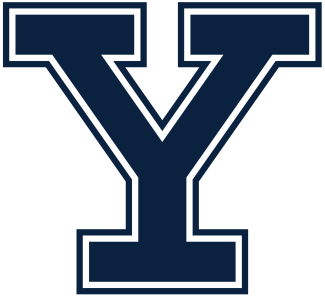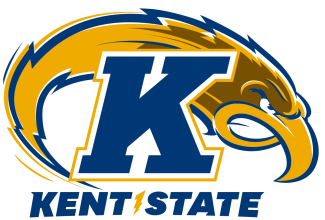NAMES TO KNOW
A Matt Brandau, Yale. The junior ranks second in the country in points (91) and fifth in goals (52). He’ll be a handful for anyone who encounters the Bulldogs.
M Graham Bundy Jr., Georgetown. The Big East tournament MVP is tied with Vermont’s Thomas McConvey for the most points for a midfielder this season with 67.
A Taggart Clark, Robert Morris. The Canadian connection is strong in Moon Township. Clark has 47 goals and 15 assists for the Colonials, and is one of the sport’s breakout stars after scoring eight times in 21 games over the previous three seasons.
FO Zach Cole, Saint Joseph’s. The national leader in faceoff percentage at .689, Cole has won at least half his draws in each appearance this season and had a 21-for-21 game against Wagner in March.
D Owen Grant, Delaware. There are a lot of options to choose from on the Blue Hens’ potent offense, but the two-time CAA defensive player of the year and Delaware’s career leader in caused turnovers is worth pointing out heading into his first NCAA tournament.
M Sam Handley, Penn. At 6-foot-5 and 230 pounds, Handley commands attention with his size. His skills — 33 goals and 33 assists worth — are exceptional, too. Don’t pencil his name into a first team All-America slot; chisel it in stone.
A Sam King, Harvard. Just a freshman, King led the Crimson in assists (19) and points (43). He’s certain to draw the attention of one of Rutgers’ top defenders.
G Brendan Krebs, Manhattan. The MAAC’s co-defensive player of the year in 2021, Krebs saw his numbers dip a little as a graduate student. Still, he’s plenty experienced and a big part of the Jaspers’ return to the tournament after a 20-year hiatus.
A Ryan Lanchbury, Richmond. The Spiders’ career scoring leader, Lanchbury has 39 goals and 39 assists and will look to cap his career by leading Richmond to its first NCAA tournament victory --- and maybe even more.
M Thomas McConvey, Vermont. The America East’s offensive player of the year, McConvey led the league with 55 goals. Only Georgetown attackman Dylan Watson (58) has more in Division I.
LSM Roy Meyer, Boston University. With 54 caused turnovers to go with 75 ground balls, Meyer is a menace in the middle of the field and a contender for All-America honors in the defensive midfield.
A John Piatelli, Cornell. The fifth-year senior made up for lost time after the Ivy’s shutdown, depositing 53 goals as the Big Red reached the postseason in former star Connor Buzcek’s first season as head coach.
LSM Ethan Rall, Rutgers. The Scarlet Knights have five players with at least 27 goals, but their defense probably doesn’t get as much attention as it should. Rall is one of the top poles in the game and could find himself matchup up with Penn’s Sam Handley in the quarterfinals if both teams advance.
M Jackson Reid, Ohio State. There isn’t a midfielder in the country playing better than Reid at the offensive end of late. He had five goals in four of his last five games to help the Buckeyes earn an NCAA berth.
A Connor Shellenberger, Virginia. The star of last year’s postseason with 14 goals and 10 assists in four games, Shellenberger is the most dynamic player on a Cavalier offense that isn’t lacking for talent.
M Jake Stevens, Princeton. A brilliant do-it-all player, Stevens has 21 goals to go along with 59 ground balls. A .429 shooting percentage stands out as well.
G Connor Theriault, Brown. When Theriault was cooking, so were the Bears. He had a .637 save percentage during the five-game winning streak in April that vaulted Brown into the postseason.
FO Luke Wierman, Maryland. What makes the Terrapins even scarier than last year, when they had Jared Bernhardt. Wierman winning faceoffs at a 65.4 percent clip is a big part of it. The best way to contain Maryland’s offense is to keep the ball away from it. Wierman makes it exceptionally difficult to do.
DON’T BE SURPRISED IF
There are fresh faces on Memorial Day weekend
Penn hasn’t reached the semifinals since 1988. Harvard and Rutgers, owners of 16 previous NCAA tournament trips between them, have never made it past the quarterfinals. Richmond has never won an NCAA tournament game. One of them will advance to East Hartford.
But it doesn’t stop there. Second-seeded Georgetown (1999) and unseeded Delaware (2007) and Ohio State (2017) each have only one trip to championship weekend. Robert Morris has never been there. And seventh-seeded Cornell, while once a Memorial Day weekend regular, last played in the semis in 2013. One of them is getting through as well.
YOU’LL HEAR A LOT ABOUT
The Ivy League
The Ancient Eight has a superlative six playing on for at least another week. It was no surprise to see Penn, Princeton and Yale land top-five seeds, and Brown and Cornell both looked like they would be in the field as well.
But Harvard, which hadn’t made the tournament since 2014? That was an unexpected quirk, and the Crimson got in largely on the strength of its victories over Brown and Princeton.
Still, that’s not the story with the Ivies. Instead, it’s the resurgence of a league that missed almost all of last season and saw enough talent to fill an All-America team transfer out. Even without posses of graduate students and transfers, the Ivy capped a comeback season with a monster Selection Sunday. And they’re not done yet.


























































